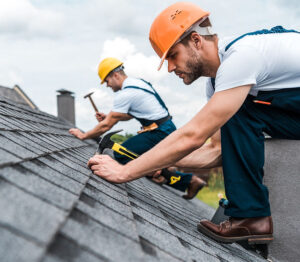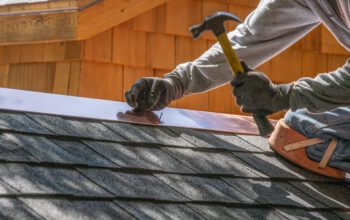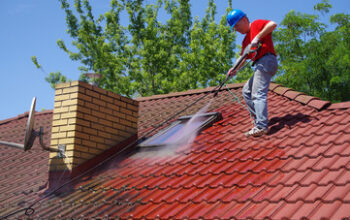A well-maintained roof helps to protect the walls, rafters, and other parts of your home. Roofing maintenance at Roofing West Chester PA includes cleaning and inspection to catch problems before they become serious.
Several factors affect the condition of your roof, such as sun damage and the growth of moss, algae, or lichen. Inspecting the shingles, flashing, and caulking is essential.
Whether your roof is old or new, you need to remove debris from it regularly. If left to build up, organic materials like pine needles, leaves, and sticks can lead to algae growth, damage shingles, or clog gutters. Keeping your roof clear also protects the surface from moss and lichen.
This is something that most homeowners can do themselves if they are comfortable climbing up on the roof. If you aren’t comfortable doing this, it is best to leave this task to the professionals. When you do it yourself, make sure the day isn’t windy or rainy. The latter could cause you to lose traction and fall off the ladder or roof itself.
The easiest way to clean the debris off your roof is with a leaf blower. This allows you to reach areas of your roof that are difficult to get to with a ladder. While doing this, be careful not to blow debris towards any chimneys, skylights, or other vulnerable spots on your roof that are easy to damage.
You can also sweep your roof with a broom or use a garden hose to spray the debris off the roof. This is an important task that should be done at least once every year, or more often if you live in an area with a lot of trees and leaves.
As you clean the debris off your roof, it’s best to start at the top and work your way down. This will prevent you from putting all of the debris in one spot and making it more difficult to dispose of it.
It’s also a good idea to cover valuable house objects with plastic sheets as you clean the roof. This will help keep the dirt and debris from sifting through your attic, into garage spaces, or into any vents and skylights. Once the debris is removed, you’ll have a clearer view of your roof and can see if there are any problems that need to be addressed. This is a great time to schedule any roofing repairs that you need to have done.
Inspect and replace the caulk.
Using a caulking gun with the right materials, you can remove old and worn-out caulk to make room for new caulking. Before you do so, clean up the area to be treated with a mildew remover (water-diluted bleach with a soft cloth works well) and soap scum remover. Then, have a small tub and denatured alcohol handy for the mess. The alcohol should soften the remaining caulk to the point of being removable with your removal tool, razor blade, or putty knife.
Remember that caulking is a temporary fix for leaky areas. If you have a serious leak, call a professional roofer to repair it correctly and prevent further damage to your home’s interior.
Inspect the caulking around each roof vent, skylight, chimney, plumbing/refrigerator, and antenna(s). Leaks often occur in these areas due to cracked housings on plastic vents or broken seams on metal ones. While a bead of caulking can sometimes solve this problem, it’s generally best to replace the vent. You may also want to check the base of each pipe boot for pulled or missing nails. If they are missing, you can usually work them loose without removing the shingles and replace them with rubber washer screws.
Then, if you are working on an asphalt shingled roof, make sure to clean off the surface to be recaulked, removing any dirt and debris that has settled there. If a section of the roof is known to experience water retention, such as ponding spots, different Karnak materials can be used to resist surface breakdown in those areas.
Dormer walls are common sources of roof leaks in homes with second floors. They channel rain into corner boards, window edges, and siding. If the caulking is old and worn out here, water can seep through these cracks and into the roof. Check the caulking here with a putty knife to see if it is sealing the adjoining surfaces. If not, replace it with high-quality caulking.
Trim Trees.
Trees around your home add beauty to your landscape, but they can also cause damage if their branches touch or hang over the roof. Trimming trees that overhang your roof is one of the best ways to protect it.
Overhanging branches can scrape against the roof shingles, wearing away their protective coating over time and causing them to tear or crack. They can also drop debris that clogs gutters, leading to an overflow of water that can rot the siding and foundation of your house. The limbs may also create moisture buildup in the attic or on the walls, which can cause mold and mildew to grow.
Keeping the branches at least six to 10 feet away from your roof can prevent these problems. It also makes it easier to clean off organic debris that accumulates on the roof surface.
If your trees are growing close to your roofline, it is a good idea to have them professionally trimmed twice a year. If you choose to do this yourself, make sure you use a ladder that is securely set in the ground and take safety precautions. Always cut the longest branches first, working your way up from the bottom to the top. Make your first cut about a foot away from the branch collar. Then, move a few inches farther out and cut again. Repeat this process until the limb breaks off.
Then, inspect the remaining limbs and remove any that are dead or diseased. Also, thin out the tree by removing any limbs that are rubbing against other limbs or crossing each other. Keeping your trees properly pruned can save you a lot of money and hassle in the long run by protecting your roof from damage.
Unless you are experienced in trimming trees, it is a good idea to hire a professional. Often, tree trimming companies can handle this task quickly and effectively without causing any damage to your roof or house. In some cases, an arborist should be consulted to help with unique situations. Using an arborist will also ensure that the work is done safely and correctly.
Inspect the flashing.
A roof’s flashing is crucial because it seals areas where other structures, like chimneys and pipes, meet the roofing materials. The flashing also protects the roof from water, air, and vapor. In other words, it’s the keeper of the roof and should be inspected regularly to prevent leaks and damage.
The flashing is a strip of metal that ties the roof and the structure together, eliminating a seam and reducing the chances of leaks. It can be made of copper, galvanized steel, aluminum, or lead. In general, copper is preferred because it is highly durable and will last a long time.
When inspecting the flashing, it is important to look for signs of corrosion. Corrosion is a natural process that occurs when the metal comes into contact with moisture, but it can be prevented by regularly applying a protective coating to the flashing.
Another thing to look for is gaps or missing flashing. This can be a problem, especially since these areas are more likely to leak. You should also check for shingles that are loose or lifting. A shingle that is loose or lifting allows water, dirt, and debris to seep into the home. In addition, a leaking shingle can cause rot and other problems with the home’s structure and foundation.
Finally, you should always be on the lookout for moss or algae growth along the flashing. This can degrade the flash and prevent it from doing its job. It’s important to remove moss or algae and reseal the flashing to keep the roof leak-free.
Keeping up with the maintenance of your roof will help it remain in good condition for years to come. This will not only reduce your insurance premiums, but it can also help you avoid costly repairs. By performing these tasks on a regular basis, you can ensure that your roof is protected from storms, the sun’s UV rays, and other environmental factors. So don’t forget to make time for some routine maintenance this year! This will ensure that your roof is strong, safe, and ready to handle any weather that comes its way.


